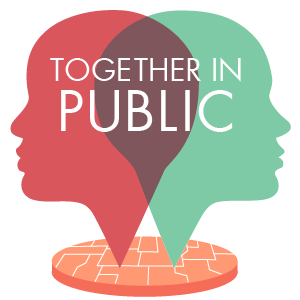

What makes humans violent to one another? Philosophers have long pondered this question. The modern debate in the West goes back to 1651, when Thomas Hobbes famously described the lives of humans in their “natural condition,” without a government to enforce order, as “nasty, brutish, and short.” In the 1700s, Jean-Jacques Rousseau argued instead that the human propensity for violence was shaped by civilization, not by nature. Among philosophers, social scientists, and evolutionary biologists, this framing of the debate as being one of nature versus nurture has continued ever since.
The idea that the state exists to forcefully punish illegitimate violence underpins every criminal justice system. The logic can be broadly summarized: homicides, assaults, and other acts of violence violate the social contract, so the perpetrators should in turn be punished, both to restore order and to provide a just outcome for the victim. When violence increases, the system tends to increase its use of force in response–but these policies rarely lead to a decrease in violent crime. What if, in looking for solutions exclusively within the criminal justice system, we are looking in the wrong place? What if, instead of treating violence as an act that demands forceful retribution, we thought of it as a disease that could be prevented?
Humans engage in a wide array of risky behaviors that can lead to serious health problems: smoking, overeating, unprotected sex. It has long been accepted wisdom that doctors should encourage patients to change their behavior–stop smoking, eat less, use a condom–rather than wait to treat the emphysema, obesity-related diabetes, or HIV that could potentially be the result. Early intervention is cheaper for health systems and can lead to better health outcomes for patients.
When it comes to violence, public debate on how to respond is often split: some see justice as mostly about punishment, while others are more concerned with rehabilitation. The former camp is more likely to see violence as some kind of innate behavior, and think that rehabilitation is, to some extent, a luxury. Rehabilitation advocates, in turn, assume a more flexible kind of human nature.
But this kind of debate is primarily about responding after a violent act, not preventing it (except in the sense of crude deterrence). Instead, it would be much more effective to change the framing of the debate altogether. Policymakers should work to prevent people from carrying out a stabbing or shooting, rather than waiting to treat the physical injuries and psychological trauma that follow; doing so has little to do with rehabilitation or punishment, and everything to do with thinking more like a doctor.
This idea gained prominence through the work of American epidemiologist Gary Slutkin. In the late 1990s, he returned to his native Chicago after years working in epidemic prevention around the world. He noticed that gun violence clustered in the same way that outbreaks of HIV or tuberculosis cluster–spreading person to person. Slutkin launched a pilot project, Cure Violence, in one of the worst-affected areas of Chicago. Homicide rates dropped by nearly 60 percent.
The model works by “interrupting transmission” of violence–employing street workers to intervene and try to cool down conflicts, preventing situations from escalating. This program now runs in several U.S. cities, including Baltimore and New York, and model is used around the world, from South Africa to Iraq to Honduras. In each area that has employed the Cure Violence model, violence has reduced by between 40 to 70 percent. Yet back in Chicago, the program still struggles for consistent funding, and its delivery has been patchy over the years as a result.
Many global and national health organizations agree that we should treat violence as a public health issue, not a criminal justice one. The World Health Organization (WHO) issues guidance on violence reduction, as does the Centers for Disease Control and Prevention in the U.S. “Despite the fact that violence has always been present, the world does not have to accept it as an inevitable part of the human condition,” says the WHO’s report on the subject. “Violence can be prevented and its impact reduced, in the same way that public health efforts have prevented and reduced pregnancy-related complications, workplace injuries, infectious diseases, and illness resulting from contaminated food and water in many parts of the world.”
The implementation of a public health approach to violence varies around the world, but there are common features. The WHO breaks it down into four steps. First: uncover as much basic knowledge as possible about all aspects of violence. Second: investigate why violence occurs, looking at causes, correlations, and risk factors. Third: explore ways to prevent violence using this information. The final step is to implement these strategies.
To be effective, this requires significant cooperation and collaboration between different governmental bodies and charities. In Glasgow, Scotland, where a public health approach has cut homicide rates by over 50 percent in the last 12 years, people who come into the emergency room after a violent crime can skip waiting lists to access support services such as alcohol treatment or counselling. Almost invariably, when a properly-funded public health approach is implemented in a city or a specific neighborhood, incidents of violence start to drop at steep rates.
Yet in many countries around the world, the prevailing orthodoxy that politicians must be “tough on crime” makes it hard to get the consensus necessary to implement it effectively. It can also be difficult for the system to entirely leave behind its fondness for punishment. This is particularly notable when the public health approach is administered through the police, as in Glasgow. In other places, such as Chicago, this work is carried out entirely outside the criminal justice system, which purists such as Slutkin say is more effective given the state’s own role in violence. In Glasgow, for example, the violence reduction program was launched with both carrot and stick–those who accepted the program’s offer of help were treated compassionately, but, simultaneously, sentences for knife-related crimes were made harsher. As the program has been more widely accepted over time, prevention has taken more precedence over traditional policing.
And despite the fact that these programs recognize the social issues that can lead to violence, they can still be disconnected from the larger injustices of the overall system, especially since not every kind of violence is visible and taking place in public spaces. For example, the number of African-Americans incarcerated in the U.S. is not exceptionally high by chance, but rather because of the structures of systemic racism and the policy decisions that shape and are shaped by them.
Despite the WHO’s best efforts and the striking levels of success in cities that have implemented the violence prevention approach, there’s still plenty of resistance. Hundreds of years later, Hobbes’ argument that human life would be “nasty, brutish, and short” without the strong arm of the law still holds sway.


How We Get To Next was a magazine that explored the future of science, technology, and culture from 2014 to 2019. This article is part of our Together in Public section, on the way new technologies are changing how we interact with each other in physical and digital spaces. Click the logo to read more.
